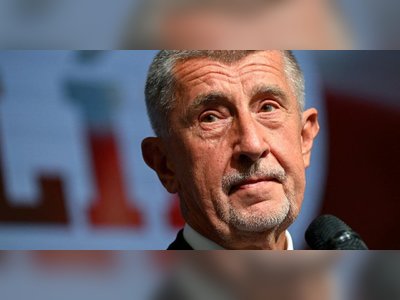Global Economic Outlook: Inflation and Interest Rates Shape Recovery
Many countries face inflationary pressures while navigating recovery from the pandemic's impact.
As the world continues to navigate the economic landscape shaped by the COVID-19 pandemic, global inflation remains a central concern for policymakers and economists alike.
In the United States, inflation rates surged to levels not seen in several decades, prompting the Federal Reserve to implement a series of interest rate hikes aimed at curbing rising prices.
In September 2023, the annual inflation rate in the U.S. hovered around 3.7%, down from a high of over 9% in mid-2022.
Simultaneously, the European Central Bank (ECB) has been faced with similar challenges.
The Eurozone experienced inflation rates nearing 5.5% in the same period, prompting the ECB to increase interest rates from 0% to 4% over the past year.
These moves have raised concerns among economists regarding the potential for recession in major economies as higher borrowing costs could dampen consumer spending and investment.
In developing regions, such as Latin America and Southeast Asia, inflationary pressures have also been prevalent.
Countries like Argentina grappled with hyperinflation, with rates exceeding 120%, while Brazil and Mexico experienced more moderate, yet concerning, inflation developments that have influenced their monetary policies.
Central banks in these nations have responded by raising interest rates in an attempt to stabilize their economies.
The Bank of England is also addressing inflationary challenges, with rates reaching 6.7% in September 2023. The UK economy has been particularly affected by a combination of factors, including post-Brexit trade disruptions, energy price volatility, and ongoing supply chain issues, which continue to weigh down economic recovery.
Conversely, some countries have successfully navigated inflationary pressures.
Japan, which has historically struggled with deflation, reported an inflation rate of around 3%, driven by rising energy costs but managed with a stable monetary policy.
The Japanese government has maintained its commitment to continued economic stimulus, while the Bank of Japan has refrained from increasing interest rates, focusing instead on sustainable growth.
Global markets have shown mixed responses to the shifting monetary policies, with stock indices fluctuating as investors react to the evolving economic environment.
Supply chain recovery has been gradual, with disruptions still impacting certain sectors, notably technology and automotive.
Commodity prices have also been volatile, influenced by geopolitical tensions, particularly in Eastern Europe and the Middle East.
Energy prices, including oil and gas, continue to experience fluctuations, affecting inflation across various sectors and economies.
The International Monetary Fund (IMF) and World Bank alongside national governments are closely monitoring these trends, striving for coordinated responses in fiscal and monetary policy to support stable global growth.
In addition, rising geopolitical tensions, especially between the United States and China, have posed further risks to economic recovery.
Sanctions, trade restrictions, and shifting supply chains could lead to longer-term economic realignments and potential disruptions to global trade flows.
In summary, the current global economic outlook is characterized by varied inflation rates and monetary policies across different regions.
Ongoing geopolitical challenges and the legacy of the COVID-19 pandemic continue to influence economic recovery trajectories while necessitating adaptive strategies from policymakers worldwide.
In the United States, inflation rates surged to levels not seen in several decades, prompting the Federal Reserve to implement a series of interest rate hikes aimed at curbing rising prices.
In September 2023, the annual inflation rate in the U.S. hovered around 3.7%, down from a high of over 9% in mid-2022.
Simultaneously, the European Central Bank (ECB) has been faced with similar challenges.
The Eurozone experienced inflation rates nearing 5.5% in the same period, prompting the ECB to increase interest rates from 0% to 4% over the past year.
These moves have raised concerns among economists regarding the potential for recession in major economies as higher borrowing costs could dampen consumer spending and investment.
In developing regions, such as Latin America and Southeast Asia, inflationary pressures have also been prevalent.
Countries like Argentina grappled with hyperinflation, with rates exceeding 120%, while Brazil and Mexico experienced more moderate, yet concerning, inflation developments that have influenced their monetary policies.
Central banks in these nations have responded by raising interest rates in an attempt to stabilize their economies.
The Bank of England is also addressing inflationary challenges, with rates reaching 6.7% in September 2023. The UK economy has been particularly affected by a combination of factors, including post-Brexit trade disruptions, energy price volatility, and ongoing supply chain issues, which continue to weigh down economic recovery.
Conversely, some countries have successfully navigated inflationary pressures.
Japan, which has historically struggled with deflation, reported an inflation rate of around 3%, driven by rising energy costs but managed with a stable monetary policy.
The Japanese government has maintained its commitment to continued economic stimulus, while the Bank of Japan has refrained from increasing interest rates, focusing instead on sustainable growth.
Global markets have shown mixed responses to the shifting monetary policies, with stock indices fluctuating as investors react to the evolving economic environment.
Supply chain recovery has been gradual, with disruptions still impacting certain sectors, notably technology and automotive.
Commodity prices have also been volatile, influenced by geopolitical tensions, particularly in Eastern Europe and the Middle East.
Energy prices, including oil and gas, continue to experience fluctuations, affecting inflation across various sectors and economies.
The International Monetary Fund (IMF) and World Bank alongside national governments are closely monitoring these trends, striving for coordinated responses in fiscal and monetary policy to support stable global growth.
In addition, rising geopolitical tensions, especially between the United States and China, have posed further risks to economic recovery.
Sanctions, trade restrictions, and shifting supply chains could lead to longer-term economic realignments and potential disruptions to global trade flows.
In summary, the current global economic outlook is characterized by varied inflation rates and monetary policies across different regions.
Ongoing geopolitical challenges and the legacy of the COVID-19 pandemic continue to influence economic recovery trajectories while necessitating adaptive strategies from policymakers worldwide.
AI Disclaimer: An advanced artificial intelligence (AI) system generated the content of this page on its own. This innovative technology conducts extensive research from a variety of reliable sources, performs rigorous fact-checking and verification, cleans up and balances biased or manipulated content, and presents a minimal factual summary that is just enough yet essential for you to function as an informed and educated citizen. Please keep in mind, however, that this system is an evolving technology, and as a result, the article may contain accidental inaccuracies or errors. We urge you to help us improve our site by reporting any inaccuracies you find using the "Contact Us" link at the bottom of this page. Your helpful feedback helps us improve our system and deliver more precise content. When you find an article of interest here, please look for the full and extensive coverage of this topic in traditional news sources, as they are written by professional journalists that we try to support, not replace. We appreciate your understanding and assistance.











